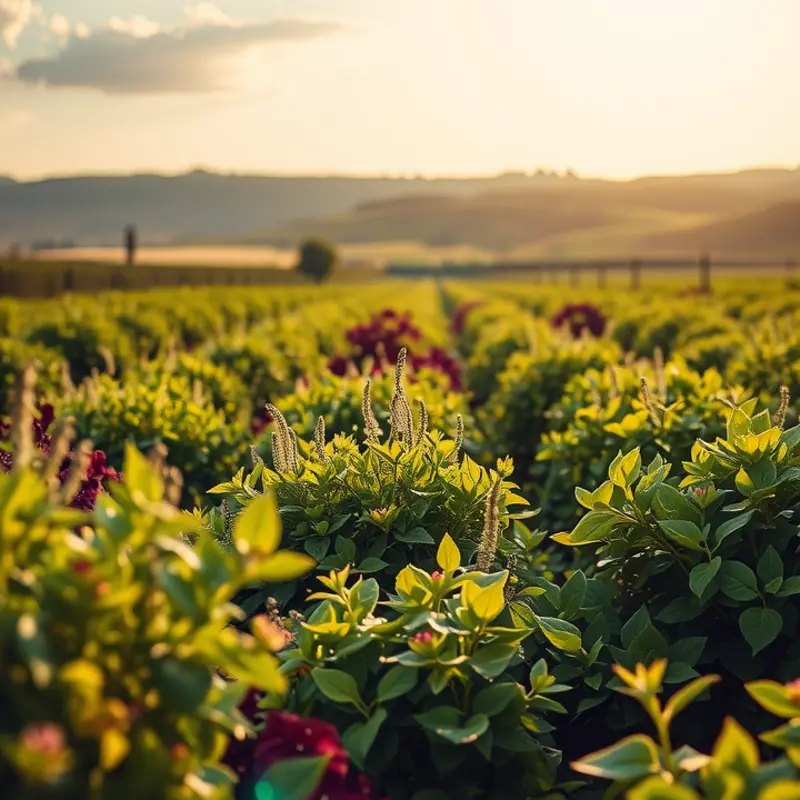Herbs are nature’s aromatic gems, adding depth and vibrancy to dishes. No matter your cooking skill, knowing how to use herbs can elevate your meals from ordinary to extraordinary. Whether you’re a novice or a seasoned chef, this guide will provide you with practical tips for selecting, preparing, and incorporating a variety of herbs into your cooking. Let’s delve into the wonderful world of herbs and enhance your culinary journey!
Selecting and Storing Fresh Herbs

Selecting the right herbs is a foundational step in elevating your culinary creations. Fresh herbs bring vibrant flavors and aromas to your dishes, but to get the best out of them, choosing and storing them correctly is key.
When selecting herbs, prioritize freshness. Look for crisp leaves with vivid colors. Avoid wilted or discolored leaves, as they indicate age and reduced flavor. Feel the stems; firm and pliable ones signify freshness. If possible, buy organic herbs from a local market, as they are often fresher and grown with fewer chemicals.
Smell is another crucial indicator when picking herbs. Fresh herbs should exude a strong, pleasant aroma. If the scent is weak or off, it suggests the herb is past its prime. For more potent herbs like rosemary and thyme, a subtle rub between your fingers should release a burst of fragrance.
Once you’ve chosen the best herbs, proper storage ensures longevity and flavor retention. Each type of herb has its optimal conditions. Soft herbs like basil, cilantro, and parsley thrive when stored in a jar of water, much like a bouquet of flowers. Trim the ends of the stems, place them in a jar with an inch of water, and cover them with a loose plastic bag. Store the jar on your countertop for basil, or in the fridge for other soft herbs. Remember to change the water every couple of days to keep them fresh.
Hardier herbs, such as rosemary and thyme, prefer a different approach. These store best when wrapped in a damp paper towel and placed inside a resealable bag or airtight container. Keep them in the refrigerator’s crisper drawer for optimal results.
For longer storage, freezing herbs is an excellent solution. Chop the herbs finely, mix them with a small amount of water or olive oil, and freeze them in ice cube trays. This method locks in the flavor and provides pre-portioned herbs ready for cooking. Simply drop a cube into your dish when needed, maximizing both convenience and flavor.
Dried herbs also offer a way to extend the shelf life of your fresh stash. Spread the herbs on a baking sheet and place them in an oven set to the lowest temperature until they are completely dry. Store the dried herbs in airtight containers away from light and heat sources. While not as potent as fresh herbs, they provide a good alternative in off-seasons.
Understanding these techniques not only preserves the quality of your herbs but also boosts the taste of your meals. Fresh herbs, when selected and stored properly, can transform ordinary recipes into mouthwatering delights. By incorporating these practices, you’re well on your way to unlocking their full potential in your cooking adventures.
For a recipe that uses fresh flavors to complement a healthy dish, you can explore the Mediterranean Chickpea Salad: A Burst of Freshness to discover how fresh herbs can redefine your salad-making experience.
Incorporating Herbs into Your Cooking

Cooking with herbs opens up a world of flavors that can transform ordinary meals into extraordinary dishes. Understanding the appropriate techniques for incorporating herbs ensures you unlock their full potential. Fresh herbs can elevate dishes with a burst of flavor and aroma, but knowing when and how to add them is essential.
Timing is crucial when working with herbs. Delicate herbs like basil, parsley, and cilantro should be added towards the end of cooking to maintain their fresh flavor. These herbs can be sensitive to heat and can easily lose their vibrant taste. On the other hand, hardier herbs such as rosemary, thyme, and oregano benefit from longer cooking times, which allows their flavors to infuse deeply.
Herbs can be used in various forms—whole, chopped, or as a fine dust. Chopping fresh herbs releases oils and enhances their aroma, making them more active in stimulating the palate. A good practice is to reserve some fresh herbs for garnish; this not only adds flavor but also contributes a visual appeal to your dish.
Infusing oils with herbs is another technique to integrate these aromatic plants into your meals. Heating oils gently with rosemary or garlic infuses them with flavor, creating a versatile base for marinades, salad dressings, or simply drizzling over finished dishes.
Creating herb pastes or pestos can be another delightful way to incorporate fresh herbs. Blending herbs with nuts, cheese, and olive oil results in a vibrant condiment that can enhance pasta, proteins, or even zucchini noodles with avocado pesto, which can provide a fresh and flavorful option, as highlighted here.
Using herbs in baking may seem unconventional, but it offers unique flavor combinations. Herbs like rosemary or thyme can complement sweet dishes, adding a surprising depth. Imagine a lemon-thyme cake or rosemary-infused shortbread cookies stimulating your taste buds with unexpected flavor.
When using dried herbs, consider their concentrated nature. Their flavors can intensify during storage, as the moisture is removed. Use them sparingly, adding early in the cooking process to allow them to rehydrate and mingle with other ingredients.
Herbs can also be infused into liquids, such as broth or alcohols, to extract subtle flavors. Infuse a simple syrup with mint for a refreshing twist in beverages, or steep rosemary in vinegar for bright, herbaceous dressings.
Mastering these techniques will allow you to enhance your meals with minimal effort. By understanding when and how to use herbs, each dish can reach its flavor potential. The next time you find yourself in the kitchen, experiment with these methods and discover the depth herbs can bring. Transition into a more adventurous culinary journey, tantalizing your senses and those enjoying your meals.
Final words
Utilizing herbs in your cooking can transform your meals, adding flavor, color, and nutritional benefits. By selecting fresh herbs and learning to incorporate them effectively, you can elevate any dish, from simple salads to hearty stews. Don’t hesitate to explore different herbs and combinations; each addition can bring a new dimension to your cooking. Remember, practice is key—so grow your confidence with herbs and make your dishes sing with natural flavors!







